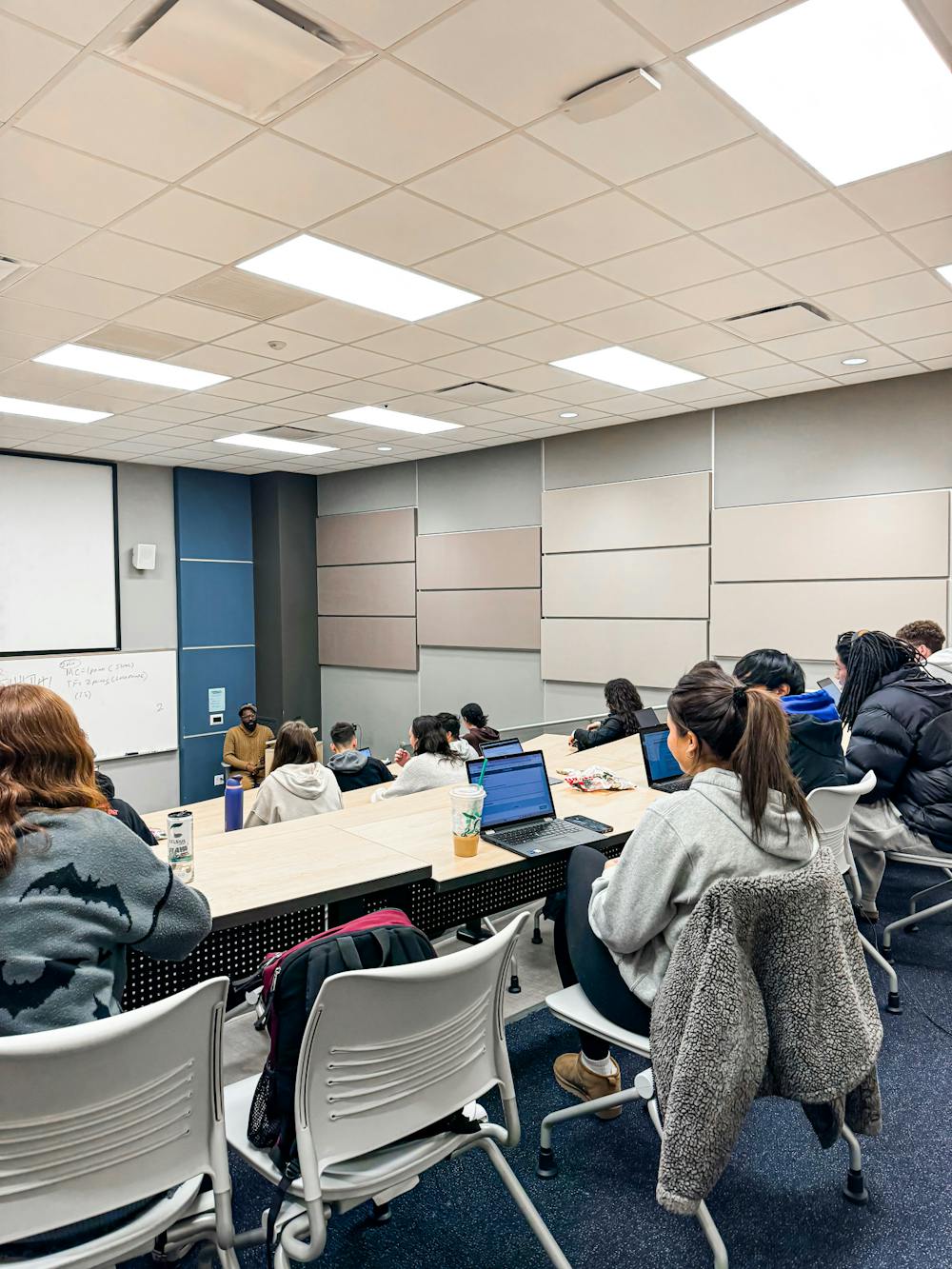Several Seton Hall faculty members are looking to expand the use of flipped classrooms, a model they believe offers many benefits to college students.
Elven Riley, an adjunct instructor in the Department of Finance at the Stillman School of Business, described the structure of a flipped class as one where students engage with material before coming to class.
"You’re assigned material and you are to come to class to discuss the material,” he said. “So the in-class time is used for interaction, discussion on the topic.”
Professors said this model encourages students to engage more deeply with the material.
“The classes will force each student to make some comparative analysis of what other students think and do compared to how they do,” Riley said. “They will also be required to engage at some point during the semester, usually, and share with others their positions on topics.”
Dr. Amy Hunter, professor of psychology, said the flipped model provides “more of an opportunity to integrate active learning into the classroom.”
However, Hunter acknowledged that the model has some challenges.
“I think sometimes students might get overwhelmed with this idea that they have to do all of this pre-class work before they actually get to class and then in class, you're doing more work on top of that,” she said.
Despite this, staff have noticed positive changes in student behavior compared to traditional lecture-based classes.
“They’re so much more confident and they're able to jump into things without having to necessarily hold their hands as much as we had to before,” Lead Instruction Librarian, Maria Barca, said.
Dr. Hunter added that students in flipped classrooms demonstrate higher comprehension.
“They tend to do better later on assessments because they’ve had a chance to really question themselves and to identify places where they might not quite understand things,” she said.
Students shared a range of opinions on the flipped classroom model. Some said they prefer the flipped format.
“I feel like it's really helpful to have an idea of the concepts before going into it, because that way, instead of having to learn a whole new concept on the spot, you get a chance to understand and get familiar with the material beforehand,” Kayla Bajakejian, a freshman business major, said.
Aylah Dornbos, a freshman elementary and special education major, said that her preference often depends on the teacher, but she usually finds pre-class materials helpful because they allow her to seek further explanation in class if she doesn’t understand something.
Others favor traditional lectures.
Junior history major Isabella Laor said she learns best with in-class lectures.
“I feel like if I have questions that come up during the lecture, it leads to really interesting discussions, and that might help the professor go in depth on what I need to know more about,” she said.
Students also expressed differing feelings about participation.
Bajakejian said the structure encourages her to speak up more because she has time to absorb the material beforehand.
“I got to really think about the material and let it marinate and really understand what I’m talking about,” she said.
In contrast, freshman psychology and criminal justice major Madison Minick said she feels less inclined to participate in flipped models compared to traditional lectures.
“I already taught myself, so I just don't really want to participate after that,” she said.“I taught it, I know it.”
Kerrigan May is a writer for The Setonian’s News section. She can be reached at kerrigan.may@student.shu.edu.





